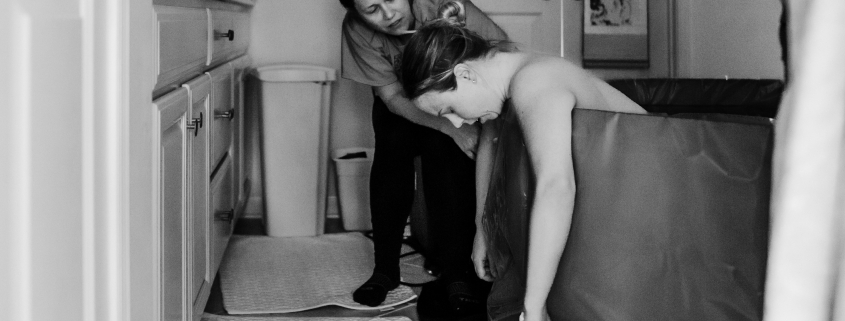Hormones and birth: the role of oxytocin

You will have four major hormonal systems active when you are in labour and after birth. A cocktail of hormones that nature prescribes. You and your baby are born with the natural ability to go into labour and give birth, breastfeed and become deeply bonded to each other. The flow of hormones in your body drives these finely tuned and complex processes. It is important that you know how these birth hormones work. You also need to understand how to work with and avoid disrupting these natural processes. This will help you to make informed decisions regarding your birth.
Birth hormones are chemical messengers that your body makes. These hormones originate in the deepest parts of the brain and cause physical processes as well as a powerful influence on emotions. Your baby makes birth hormones too. These hormones work together to help make labour and birth go smoothly and safely for both of you.
Birth hormones help to guide you and your baby in many ways. Such as:
- Getting your body ready to give birth
- Starting your labour contractions
- Driving your contractions during labour
- Telling your breasts to make milk and getting your baby ready to breastfeed
- When you and your baby fall in love, birth hormones are part of those feelings too
Let’s talk about Oxytocin.
Oxytocin is often known as the “hormone of love” or the “shy hormone” because it is involved with sexual activity, fertility, contractions during labour, birth and the release of breastmilk during breastfeeding. It helps us to feel good, relaxed and it triggers nurturing feelings.
Oxytocin is the most powerful contraction-causing hormone. Contractions that are essential to the birth process, thinning and opening the cervix, moving the baby down and out of the birth canal, pushing out the placenta and limiting bleeding.
Low levels of oxytocin during labour and birth can cause problems. These include:
- Contractions can slow down or stop, making labour last longer or even stall and can be more painful
- Increasing the need for medical interventions
- Increased bleeding after birth
However, there are several ways that you can promote your body’s production of oxytocin.
- Staying calm, comfortable and having confidence in your body and capabilities as a woman. Fear is a disruptor to oxytocin production and the natural birthing process. The use of relaxation, hypnobirthing and breathing techniques will help you to feel in control.
- Avoiding disturbances during labour and birthing such as unwelcome people, conversation, noises, lighting, and uncomfortable procedures. Ensure a private, warm and a cosy protective birthing environment.
- Staying upright and having the freedom to move with your natural birthing instinct. Gravity helps your baby to press against your cervix during labour. Listen to your body. Birth mats, birth balls, peanut balls and pillows in the birth space will help you find the most comfortable positions that feel right for you.
- Stimulating your nipples before birth and actions of your baby suckling after birth increases the release of oxytocin.
- Enjoying skin to skin and eye contact with your baby also optimises oxytocin release.




